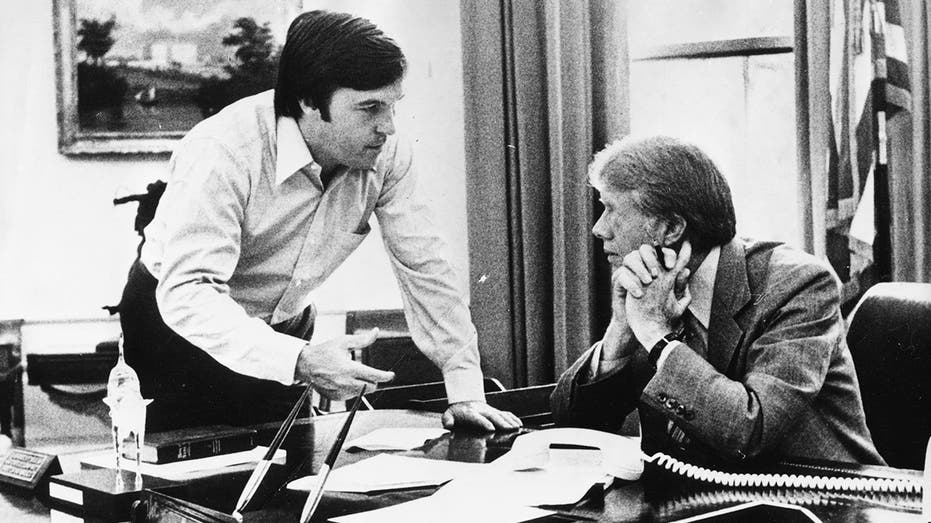Stagflation worries ignite comparisons to Carter's 1970s
Stagflation is defined as a period of inflation with declining economic output
Inflation return would be ‘devastating’ to Biden admin: Art Laffer
Former Reagan economic adviser Art Laffer provides insight into inflation, energy prices and the U.S. economy.
Surging consumer prices and gasoline shortages have sparked concerns the U.S. economy could relive the nightmarish stagflation of President Jimmy Carter’s administration in the late 1970s.
Stagflation is defined as a period of inflation with declining economic output.
The economy under Carter experienced inflation and unemployment that were both in the double digits as the result of an oil price shock that began when Iranian oil workers went on strike.
"Six months ago, America was energy-independent. Now we have gas lines," tweeted House Minority Leader Kevin McCarthy, R-Calif. "President Biden is well on his way to creating another Jimmy Carter economy."
Gas stations across the East Coast have for the last week faced fuel shortages and long lines after the 5,500-mile Colonial Pipeline, which supplies almost half the region’s supply, was taken offline by hackers. The outages evoked memories of the gas lines that occurred during the sharp drop in Iranian oil production at the end of the Carter administration.

President Jimmy Carter at his desk in the Oval Office, talking to his new Chief of Staff Hamilton Jordan at the White House in Washington D .C., on July 19, 1979. (Keystone/Hulton Archive/Getty Images)
Additionally, a Labor Department report released last week showed core consumer prices, which exclude food and energy, rose 0.9% in April, the most since September 1982, when the U.S. economy was emerging from its decade-long bout with stagflation. Annually, prices were up 4.2%, the biggest increase since September 2008.
COLONIAL PIPELINE FIASCO FORESHADOWS IMPACT OF BIDEN ENERGY POLICY
Rising consumer prices aren’t the only worry for economists, who are also assessing the possibility of a slowing U.S. economy.
The labor market last month added a disappointing 266,000 jobs as the unemployment rate ticked up to 6.1%. Economists surveyed by Refinitiv were anticipating the addition of 978,000 jobs as the unemployment rate fell to 5.8%. This as manufacturers are grappling with supply shortages caused by the pandemic
"What is happening to activity and prices isn’t a repeat of the stagflation of the 1970s," wrote Paul Ashworth, chief U.S. economist at research firm Capital Economics, referencing inflation and unemployment that were both in the double digits. "But it does have a bit of the same whiff about it, which is eerily similar to conditions in 2005 and 2006."
Ashworth added that back then, Federal Reserve Chairman Alan Greenspan hiked interest rates to rein in inflation, something current chairman Jerome Powell seems less inclined to do. The Fed currently has a "broad and inclusive" full employment goal, leading Ashworth to believe the central bank won’t hike rates until late 2023.
Ashworth thinks the Fed won’t began raising its benchmark interest rate until late 2023.
GET FOX BUSINESS ON THE GO BY CLICKING HERE
Strategists at Bank of America predict the stagflation narrative will begin to take hold in the second half of this year.
Investors looking to position for the shift should rotate into "’defensive growth,’ e.g. staples, big pharma, monopolistic telecos, utilities," wrote Michael Hartnett, chief investment strategist at Bank of America.




















